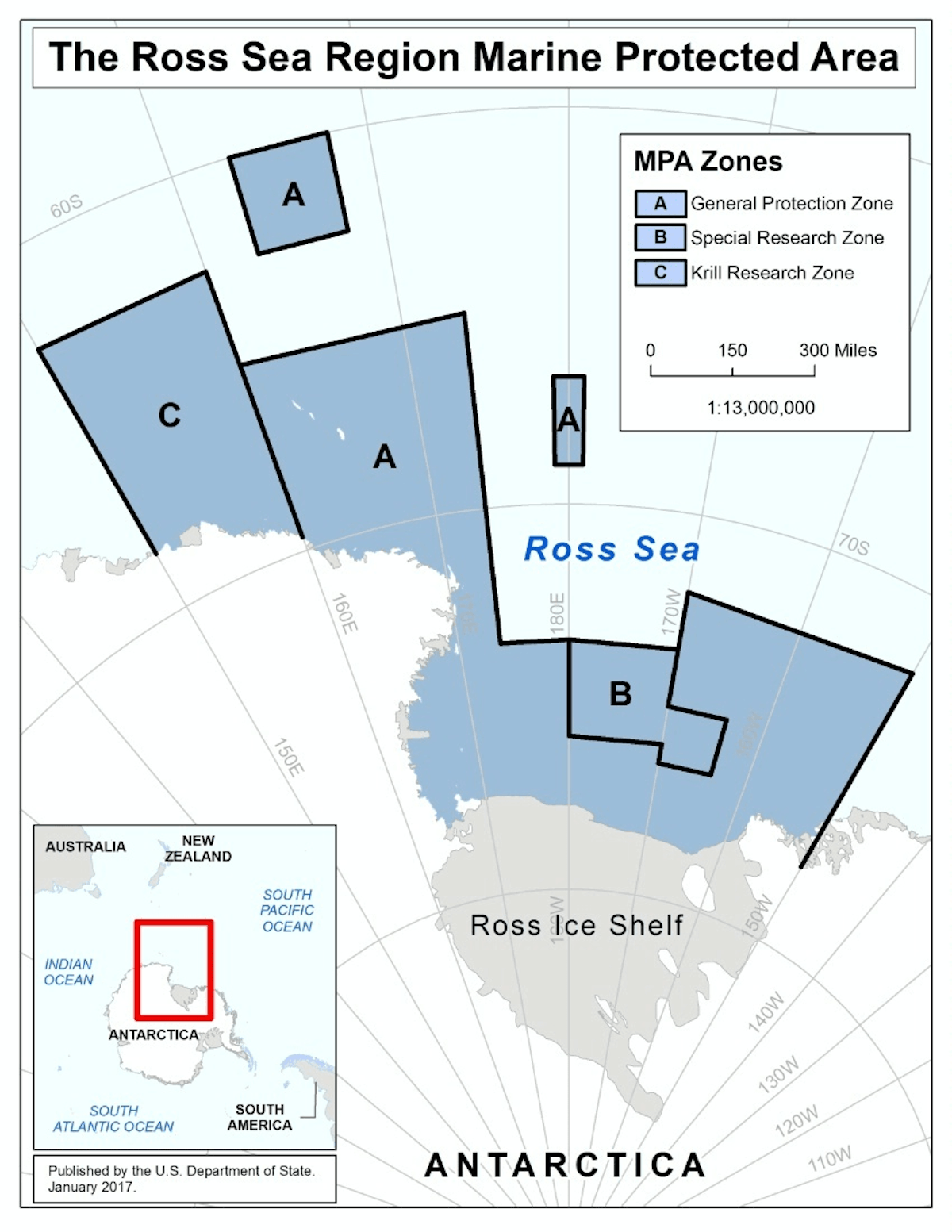Why Antarctic Marine Protected Areas Matter for Global Biodiversity
Marine biologist focusing on ocean conservation and plastic waste reduction.

Marine biologist focusing on ocean conservation and plastic waste reduction.

Marine Protected Areas (MPAs) are designated zones within our oceans where human activities are carefully managed. They are vital for safeguarding marine biodiversity. They are essential tools for conservation.
MPAs act as crucial refuges for countless marine species. They shield them from threats like overfishing, habitat destruction, and pollution.
In Antarctica, MPAs range from areas with strict regulations to zones where specific activities are permitted under controlled conditions. No-take zones prohibit all extractive activities, fostering undisturbed ecosystem recovery. Multiple-use MPAs allow sustainable activities, balancing conservation with human needs.
The Ross Sea Region MPA is the world's largest marine protected area. It came into force on December 1, 2017.
Antarctic MPAs protect unique ecosystems and species found nowhere else on Earth. They provide safe havens for breeding, feeding, and growth. This is crucial for maintaining the delicate balance of the Southern Ocean's food web.
These waters are home to Antarctic krill. These tiny crustaceans remove carbon from the atmosphere.
MPAs enhance the resilience of marine ecosystems to climate change. By reducing stressors like fishing, these areas help ecosystems better withstand and recover from environmental changes. The Southern Ocean plays a critical role in regulating the Earth's climate.
Protecting these waters is essential for global climate stability. Research indicates that proposed MPAs in the Southern Ocean will help to provide ecosystem resilience.

While primarily focused on conservation, MPAs can also provide economic benefits. Sustainable tourism and well-managed fisheries can thrive, supporting local economies. This is particularly true for communities near the Antarctic Peninsula.
The Western Antarctic Peninsula attracted more than 74,000 visitors in 2019-20. This demonstrates the economic potential of well-managed tourism in the region.
Antarctic MPAs are home to diverse species, including penguins, seals, whales, and a variety of fish. These areas protect critical habitats like sea ice, which is essential for many species' survival. Protecting these hotspots is vital for maintaining the region's ecological integrity.
The Antarctic Peninsula waters are home to abundant marine life. This includes orcas and humpback whales.
Antarctic krill is a keystone species, supporting a vast array of predators. MPAs help maintain healthy krill populations. This ensures the stability of the entire food web.
Krill is vital to the Antarctic food web. It is a food supply of penguins, fish, whales, and other ocean wildlife.
The Southern Ocean's currents distribute nutrients globally, influencing marine life far beyond Antarctica. Protecting these waters through MPAs has far-reaching benefits for the world's oceans. It supports the health and productivity of global marine ecosystems.
Upwellings from the depths of the Southern Ocean help spread nutrients through the entire Southern Hemisphere. This maintains three-quarters of all marine life.
MPAs can enhance fisheries outside their boundaries through the spillover effect. Adult and larval fish from protected areas replenish surrounding waters. This supports sustainable fisheries and global food security.
The connection between biodiversity loss and ecosystem health is undeniable. Healthy ecosystems are more productive and resilient.
Establishing and managing MPAs in Antarctica requires international cooperation. Political disagreements and differing priorities among nations can hinder progress. This is evident in the ongoing negotiations within the Commission for the Conservation of Antarctic Marine Living Resources (CCAMLR).
Since 2016, CCAMLR members have been unable to reach consensus on any new marine protected areas. A minority of member countries are undermining CCAMLR's ability to do this important conservation work.
Climate change is causing rapid ice melt and ocean acidification in Antarctica. This threatens the very ecosystems MPAs aim to protect. Overfishing, particularly of krill, further compounds these challenges.
The stressful impacts of climate change on krill are compounded by an increase in concentrated fishing. This impacts predators and the krill fishery.

CCAMLR is responsible for designating MPAs in the Southern Ocean. Its consensus-based decision-making process has led to delays in establishing new protected areas. Strengthening CCAMLR's ability to act decisively is crucial.
CCAMLR is charged with taking a precautionary approach to the conservation of the Southern Ocean. They are responsible for developing scientific advice and reviewing compliance with its regulations.
Effective MPA management requires robust scientific research, monitoring, and enforcement. Adaptive management strategies that respond to new scientific findings and changing environmental conditions are essential. This includes addressing issues like gray water and abandoned fishing gear.
In addition to the establishment of marine protected areas, ASOC supports a ban on the discharge of untreated black water and gray water. They also advocate for mandatory regulations that require fishing vessels to mark their fishing gear.
International cooperation is vital for the success of Antarctic MPAs. Nations must work together to overcome political barriers and prioritize conservation. Implementing policies that support sustainable practices and reduce human impacts is also necessary.
CCAMLR needs to implement a precaution-based approach to the conservation of Antarctic marine living resources. They need to follow through on its commitment to establish a network of MPAs.

Protecting Antarctic waters through MPAs is not just about conserving a remote region. It is about safeguarding global biodiversity and ensuring the health of our planet. The time to act is now.
Oceans act as vital carbon sinks. They absorb a significant portion of human-caused CO2 emissions. Protecting marine environments is crucial for mitigating climate change.
Key Takeaways:
— in Climate Change
— in Climate Change
— in Wildlife Conservation and Deforestation
— in Wildlife Conservation and Deforestation
— in Wildlife Conservation and Deforestation